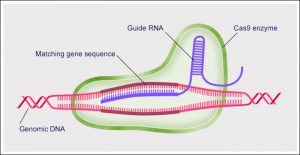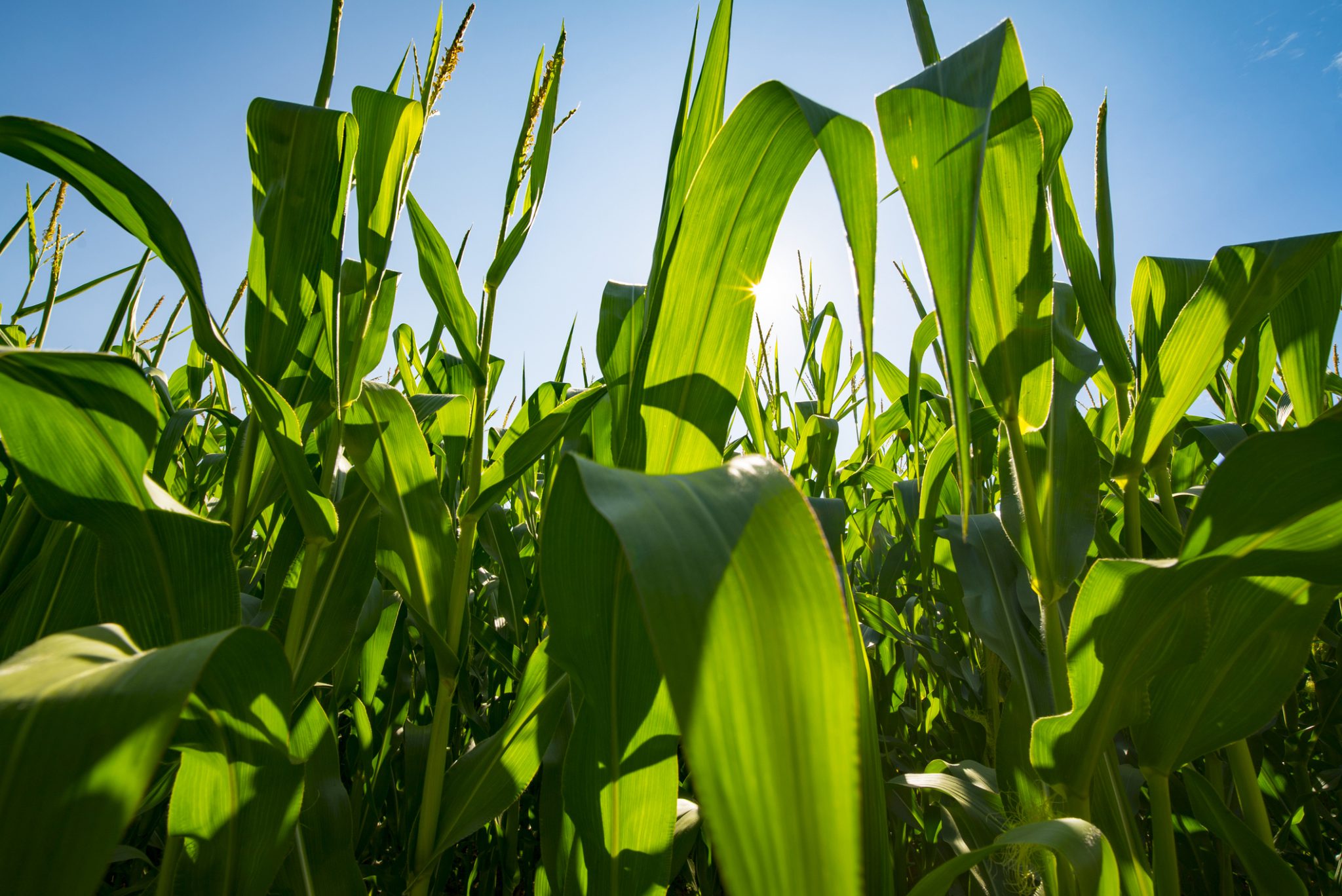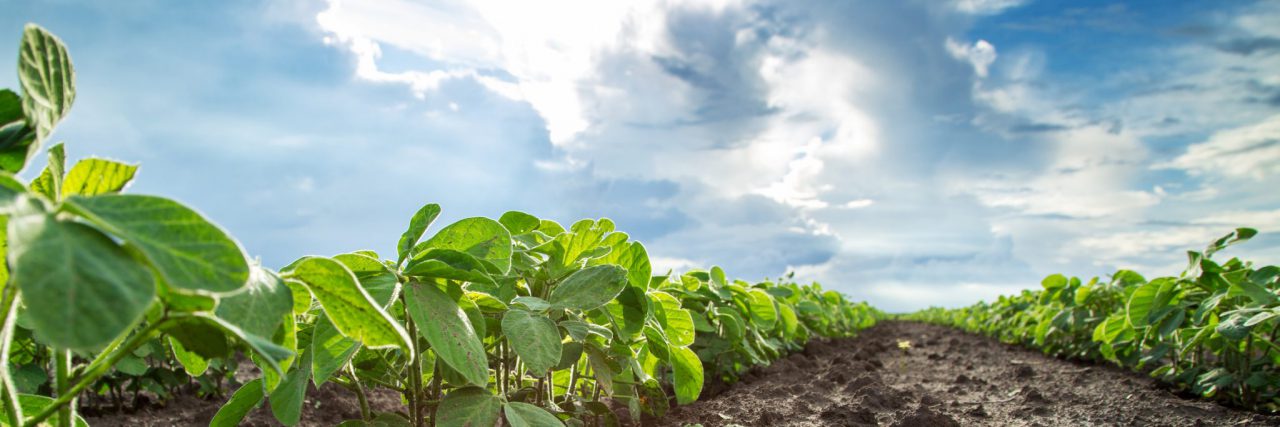
CRISPR-Cas9 technology provides an extremely precise and powerful tool for modifying genomes with countless potential applications, many of which are in agriculture. The University of Warwick’s Jessica Finch considers what this might mean for food security.
With the speed and abundance of new scientific breakthroughs being made in today’s world, the term “revolutionary” is heard quite frequently; however, one genome editing technique taking the scientific world by storm seems likely to live up to this accolade: CRISPR-Cas9 gene editing.
The CRISPR-Cas9 System
CRISPR-Cas9 is a tool for very precisely engineering an organism’s genetic material. Derived from a bacterial defence mechanism against viruses, it allows bacteria to store a copy of viral DNA in their own genome, the RNA from which combines with a Cas enzyme to prompt the quick detection and destruction of that virus should the bacteria encounter it again.
The co-opted version of this system involves using synthetic guide RNAs – sections of RNA designed to match a specific section of the gene that you wish to edit – and a slightly modified version of the naturally occurring enzyme called Cas9. When a match is found, the Cas9 enzyme cuts both strands of the DNA in the region of the genome specified by the guide RNA. During the subsequent DNA repair process, specific changes can be introduced to precisely change the function of the gene in the desired way.

Applications and implications
CRISPR-Cas9 technology was first described in 2012, and since then thousands of research papers using the technique have been published. As well as its applicability as a fundamental biological research tool in laboratories, the CRISPR-Cas9 system has been hailed for its wide array of potential “real-world” applications.
For example, many are interested in the potential applications of CRISPR-Cas9 in solving some of the trickiest genetic engineering challenges, such as producing bacteria that can break down tough plant material (like cellulose) to produce biofuels.
Increasingly, the potential applications of CRISPR-Cas9 to agricultural problems are coming under scrutiny, particularly in the context of crop improvements – such as increased stress or disease tolerance and higher yielding varieties – but also in relation to livestock engineering. For example, researchers are investigating the possibility of using CRISPR to engineer pigs that are immune to a particular haemorrhagic virus that devastates farms in Sub-Saharan Africa and Eastern Europe, or to make chickens which lay hypoallergenic eggs.

CRISPR-Cas9 and Food Security
The potential application of CRISPR-Cas9 to the improvement of crops or livestock raises the question: “does CRISPR-Cas9 have a role in food security?” The answer to this is far from simple, as it depends on a huge array of food system factors; however, I believe there could indeed be a relationship between CRISPR-Cas9 and food security.
It is important to remember that CRISPR-Cas9 is just a tool. It is a way of achieving genetic changes in a species in order to produce phenotypic changes of value to us, and we have been doing this for thousands of years through selective breeding. If the end result of genetic changes being made is, for example, a safe and environmentally sound rice containing higher concentrations of vitamin A, does it matter whether this was achieved by selective breeding, out-crossing to other species, conventional GM or CRISPR-Cas9?
The different tools used may vary in their speed and accuracy, but ultimately it is what we use them for that matters, not which tool we employ. So if genetic changes to crops and livestock for the purposes of increasing productivity are considered a valid contribution to food security, and if CRISPR-Cas9 emerges as an equally good if not better tool for achieving this than what is already used, then CRISPR-Cas9 may indeed have a role in addressing the food security challenge.
A version of this blog first appeared on the FCRN website.
Add your comment.
About Jessica Finch
Jess is a PhD student at The University of Warwick, where she researches the link between immunity and growth in plant roots, with a view of ultimately improving crop growth under conditions of biotic stress. In addition to her PhD studies, Jess works part time for the Food Climate Research Network (FCRN), contributing regularly to their food sustainability communication projects.




This ‘tool’ sounds great. However, we have to bear in mind that the biggest issues of food insecurity are in Africa where crops already have the potential to yield 5- to 7-fold more than they do. The constraints to production do not lie with low potential yield, but with achieving actual yields that reflect the potential. The constraints to achieving this lie in solving environmental, social and economic problems.
Jessica says about crop breeding ”The different tools used may vary in their speed and accuracy, but ultimately it is what we use them for that matters, not which tool we employ”. This dismisses three key arguments against GM crops (of which the CRISP technology she writes about is one example). First, if the tool used introduces uncertainty and unpredictability into the new crop variety, by affecting other parts of the crop DNA, what tool we employ does matter. Second if the tool used produces crops that make planting other crops impossible (in practice non-GM and organic crops have great difficulty co-existing with GM crops), then it matters (especially if the other crops need fewer chemical inputs and cause less ghg emissions). Third, if a focus on theoretical benefits 20 years or more in future of using a tool like GM divert massive resources from tackling the problems Prof Leaky highlights – then it matters! Peter Melchett, Policy Director, Soil Association
Crispr Cas9 systems were reported in 2007 in Science by Rodolphe Barrangou. He was studying yogurt at Dabisco/DuPont. The implications for better foods did not start in 2012.